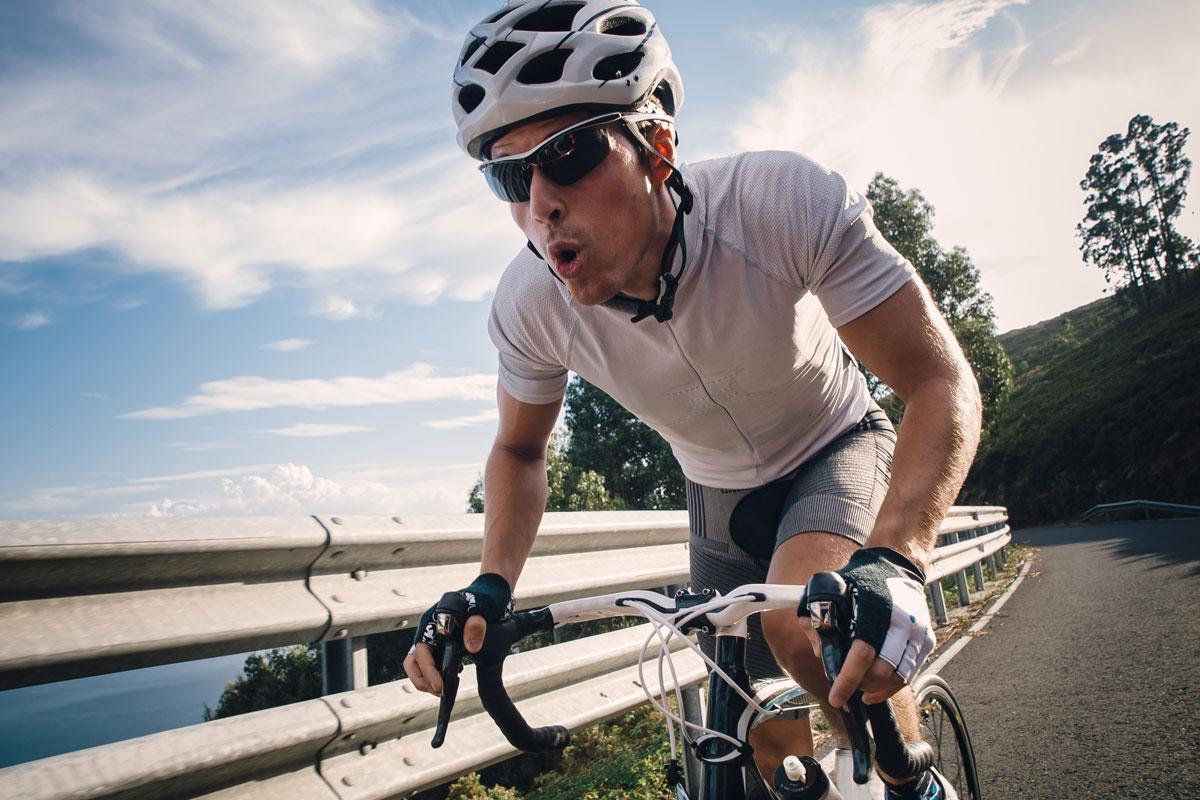
Cycling—whether through inhospitable passages of the mountains or streets of the city—is a liberating form of transport. High speed, however, also leaves a cyclist exposed to the elements. Eye protection is therefore a need for security and not just a matter of style. Good cycling glasses are a perfect mixture of comfort, function and protection; They protect their eyes from the wind, sun's rays, debris, insects or sudden climate change.
A good pair of cycling glasses will help any cyclist concerned with road visibility, performance and safety. This guide will describe the need to ride a bicycle, how to choose the right one, and what makes the best brands different.
With the absence of a cycling glasses, you expose your eyes to dust, insects, dirt, wind, UV rays, sudden gravel or debris attacks, or anything that may be quite annoying. At high speed, something as small as a dust spot can become so annoying that it distracts you from your focal point.
Bicycle cups prevent:
UV damage from extended exposure to harmful rays can result in cataracts and long-term imaginative and prescient issues.
Wind irritation—Dry eyes from airflow reduce visibility and slow down reaction time.
Debris and insects — Gravel to bugs: An open target for any debris to get into the eyes.
Weather discomfort—Rain, fog, and snow can sting and distract, but use anti-fog glasses to lessen the distraction.
Glare and sunlight—Reduce squinting and improve clarity during bright daylight rides.
To any cyclist, these are not slight inconveniences, and these are possible safety hazards.
It is tempting to use everyday sunglasses; however, these are generally inferior in relation to comfort, fit, and safety. These shades are specially designed with the riders in mind. They’re performance-protective and in motion.
How cycling eyewear is unique:
Wrap-around fit – Adds extra protection from oblique distractions.
Impact-resistant lens—Shields from projectile dust and accidental drops.
Ventilation systems – That eliminate fog and protect visibility during elevated respiratory rates.
Adjustable nose pads and arms – For a secure, bounce-proof fit during rocky days.
Interchangeable lenses – For tints to clear lenses or photochromic ones, depending on the light.
In short, cycling eyewear is a tool, not a nylon fruit-slice handbag, and is made to suit your goals—comfort and protection—while riding.
A myriad of cycling glasses available online may suddenly overwhelm one. When assessing a couple, several standards can guide you:
1. Lens Technology: Look for UV400 protection, polarization, and anti-fog functions. Photochromic lenses are a pleasing function for rides that start at the crack of dawn or expand into daybreak.
2. Frame Durability: Lightweight, bendy substances along with TR90 or polycarbonate are perfect. They withstand impact and keep comfort over prolonged durations.
3. Fit and Comfort: The best pair is one that you forget you are wearing. Adjustability and snug fit due to the wraparound design add to their comfort.
4. Lens Shape and Coverage: Large lenses positively correlate with better protection and a wider field of vision, more so for fast road cyclists.
5. Style Meets Function: You don’t have to sacrifice style for safety—plenty of leading brands nicely combine the two.
While scanning cycling eye wear online, specifications will always matter first; anything else is secondary, and your eyes—and the whole cycling experience—will forever thank you for that.
With an overwhelming number of choices available today of cycling sunglasses, there are a few that always rise above the rest. Be it for beginners or professionals, consider these best sunglasses brands for cycling:
Oakley – A brand that is well-known for the clarity and durability of its lenses for professionals.
100% Speedcraft – A cyclist's favorite among the competition due to the ventilation and lens range.
Smith Optics—Wide lens options blended with a top-of-the-range anti-fog coating.
Tifosi—With a lower price point, this brand does not hold back on technical features or safety.
POC—Fuses Scandinavian design with innovative technology in lenses.
When narrowing down a logo in your choice, also check your cycling dreams—whether or not they be amusement, commuting, or opposition—and align the version's specifications to that.
Another stronghold of cycling glasses is their versatility; they are not limited to sunny days and are available for all rides.
Morning rides: Choose photochromic lenses, which develop tintable powers according to the sunshine during morning hours.
Rainy conditions: Anti-fog coatings paired with hydrophobic lenses mean that visibility will remain unaffected.
Trail rides: Wraparound frames are big allies to protect from branches and flying dirt.
Urban commutes: Polarized lenses put off glare from avenue surfaces, windows, and headlights.
Winter cycling: Clear lenses with ventilation allow preserving sight through freezing air and snow.
Many times, a single pair with interchangeable lenses will cover you from one season to the next, and that’s what you need in any given environment.
Vision is one of your most powerful allies on any bike—whether commuting or traversing the countryside. Cycling glasses serve not just as a mode of protection—they also serve the comfort, performance, and confidence of a cyclist.
With an extensive variety of choices available through cycling eyewear online, it has never been easier to find a go-to applicable to the needs of any cyclist. For cycling gear that is dependable, stylish, and high-performing, look forward to Tredz—your partner on every road and trail.
What glasses are best for cycling?
The pleasant glasses for cycling are wraparound, effect-resistant, UV-blanketed, and offer anti-fog or interchangeable lenses for numerous situations.
Can you use sunglasses for cycling?
Standard sunshades may offer confined safety; however, they lack functions like airflow, grip, and full coverage designed particularly for cycling.